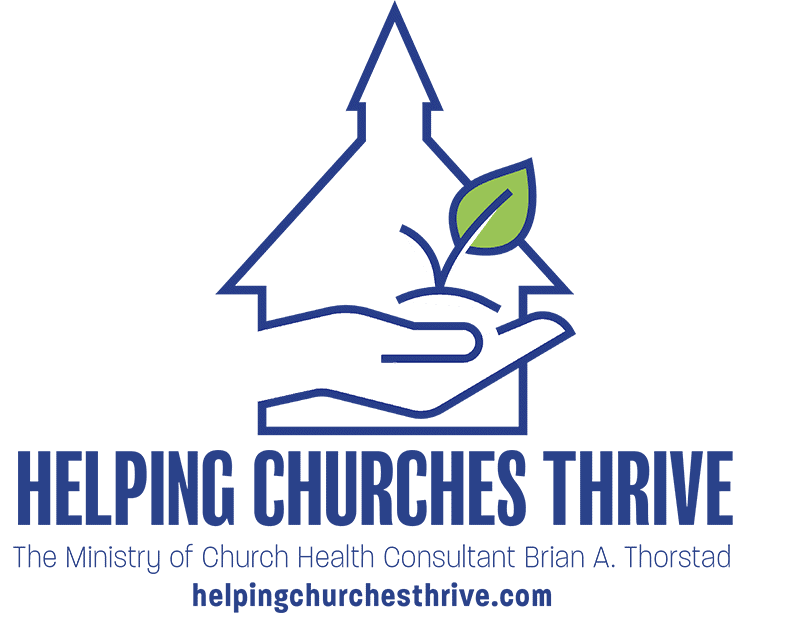It’s good to start with a description of the disciple your church is trying to produce.
This can be extensive or just a few bullet points. It makes a great group exercise to work on these. Have the folks involved give a Scriptural basis for each characteristic they list.
Why is this important? Because different churches/Christian groups have very different ideas of what a “mature Christian” looks like. Compare: the ideal Christian disciple in the liberal mainstream church on First Street vs. the ideal Christian disciple at the fundamentalist church over on Second Street.
Medical schools know what they want their graduates to know. They know what skills they want them to have. They may even have a plan for their character development. So they have a curriculum which is designed to teach vital skills and knowledge in a logical order.
Jesus invited us to think about the educational parallel by telling us to “make disciples.” He told us where to find our curriculum by telling us to teach them how to obey everything He had commanded.
In most of our churches we simply throw people into a buffet of choices and hope that the new believer will choose a class or group which is appropriate for him/her, not an in-depth study of the book of Revelation. The argument is: If we’re supposed to make something (disciples) let’s approach it deliberately, thoughtfully, intentionally, proactively instead of just offering curriculum choices based on the availability of motivated teachers.
Structural models:
- The Adult Bible Fellowship (ABF) model – The church is divided demographically with 20 somethings in one group, 40 somethings in another etc. These groups stay together and grow old together. They’re usually 20-40 in number and meet on Sunday morning. They function like a church within a church. They are led by a team of leaders who work together to bring their group of people to maturity. This model can be effective, but requires many good sized classrooms and many participants are still left hungry for a small group experience.
- Demographically mixed, long-term small groups model. You join a small group and the group leaders are responsible for knowing what the group members need and feeding them appropriately. Relationships within the group are used to help bring people to maturity.
- The progressive small groups model. The new believer attends a group for a few weeks in which an individual or couple teach about marriage (their specialty). Then they’re sent to a group led by another individual or couple who teach about how to study the Bible. Next they’re sent to a group in which a third individual or couple teach about prayer. This model looks nice on paper. We’re not sure how well it actually works.
- The one-on-one discipling model – The church selects a discipling tool; some kind of fill in the blanks book or booklet usually. The discipler meets with a newer believer one on one for a few months or even for a few years. This can be wonderful, but it’s labor-intensive. One-on-one discipling has both strengths and weaknesses.
- Adult Sunday School class or worship service model. A teacher in a classroom or a pastor in his pulpit follows a definite, deliberate teaching plan to bring people to maturity. The weakness with this method is that it is assumed that knowledge = maturity. It misses the fact that we are supposed to teach people to obey Jesus’ commands. You could charge that this is a “western,” academic model.
A variant on this theme is simply preaching through the Bible, cover to cover. Everything gets covered, but again, relationships and obedience and action steps are not usually part of the plan. It could be said that both of these methods lack the personal touch.
- Rick Warren’s Baseball Diamond – In this model, first base represents a series of 100 level (basic discipleship) classes. 2nd base represents a series of 200 level classes, etc. Again, the downsides are probably (1) the lack of a relational element and (2) the assumption that knowledge = maturity.
- The sermon-based small groups model. The theory is that we’re throwing too much content at people every week and educating them beyond their level of obedience. In this model a few questions are in the bulletin or on the church web site. These enable small group leaders to start with last week’s sermon and go deeper, or better yet, focus on the APPLICATION of whatever the preacher taught. This method is fleshed out well in Larry Osborne’s book, Sticky Church.
An even more focused version of this involves the pastor/pastors preaching (1) Through the Bible or (2) Progressively through the 5 or 10 point description of the kind of disciple of Jesus the church is seeking to produce (described above).
In a given year the pastor might teach on 3 or 4 aspects of the 10-part description of a mature disciple. He might do a topical sermon series or even a book series to teach on one aspect of a mature disciple. For example, to tackle “disciple characteristic #7, evangelism,” the pastor might preach through the Book of Jonah. If characteristic #5 is love, he might preach through I John.
- The family. With Deuteronomy six as their mandate, some churches focus on equipping parents to comprehensively teach the Bible and the Christian life to their children.
- The Group publishing, Faithweaver Curriculum model. The Faithweaver model involves all age groups in the church using the same Sunday School curriculum, with materials tailored to each age group covering the same passages/topics each week. The idea is that families can talk easily about the passage they studied if they all studied the same passage, at their own level. At one time (this may or may not be true today) the materials went through the Bible every 3 years. Part of the theory behind Faithweaver is that we’re giving people two significant portions of Bible content on Sunday morning, thus confusing them with too much information and not enough application.
A variant on this method: Pastors could preach their sermons from the passage/lesson instead of using it in a SS class OR EVEN in addition to using it in a class. Create follow-up materials to use with small groups and you’d have an in-depth dive into one passage each week, with lots of time for application and discussion.
Content/curriculum options:
- Navigator’s 2:7 series – At one time this involved 6 booklets which took 2 years to complete. It has been reduced in size to three booklets. The 2:7 Series puts a big emphasis on scripture memory and taking action. It does not cover all the basics of the faith but is more focused on discipleship behaviors/skills/disciplines.
An advantage of adopting something like the 2:7 Series: The same booklets could easily be used in classrooms, small groups in homes or one on one. The description of the Christian life found in the booklets could became well-known and oft’ referred to in the church, giving the congregation a common “language” for discipleship.
- Navigator’s Design For Discipleship series – A series of fill in the blanks booklets. Design…is a little less “discipline” focused than the 2:7 Series described above. A church could easily adopt both the Design…Series and the 2:7 Series for its standard curriculum.
- Sonlife Ministries – Involves “the head, the heart and the hands.” See their website for a variety of Bible study materials, most of which are strategically sold in “packs of two.”
- Create a library of materials for small group use – Used in some “simple,” small-group church models, this involves having a few church office library shelves full of materials which have been carefully, pre-approved by the church leadership. As long as small group leaders are choosing materials from this library, they’re giving the people something they need to grow up in Christ.
- Right-Now-Media – In this model the church subscribes to “Right Now” and any congregation member can tap into a wealth of downloadable/streamable materials. This is a treasure trove of teaching materials, but of course, it isn’t a systematic plan for disciplemaking.
- The Bible Project – TheBibleProject.com describes this ministry as a fully-funded animation studio which helps people understand the overall Bible story as leading to Jesus Christ. These materials are worthy of your consideration, and free.
So now what? Decide on a content/curriculum option and a structural model for delivering that content. By all means get started with an intentional discipleship pathway.

